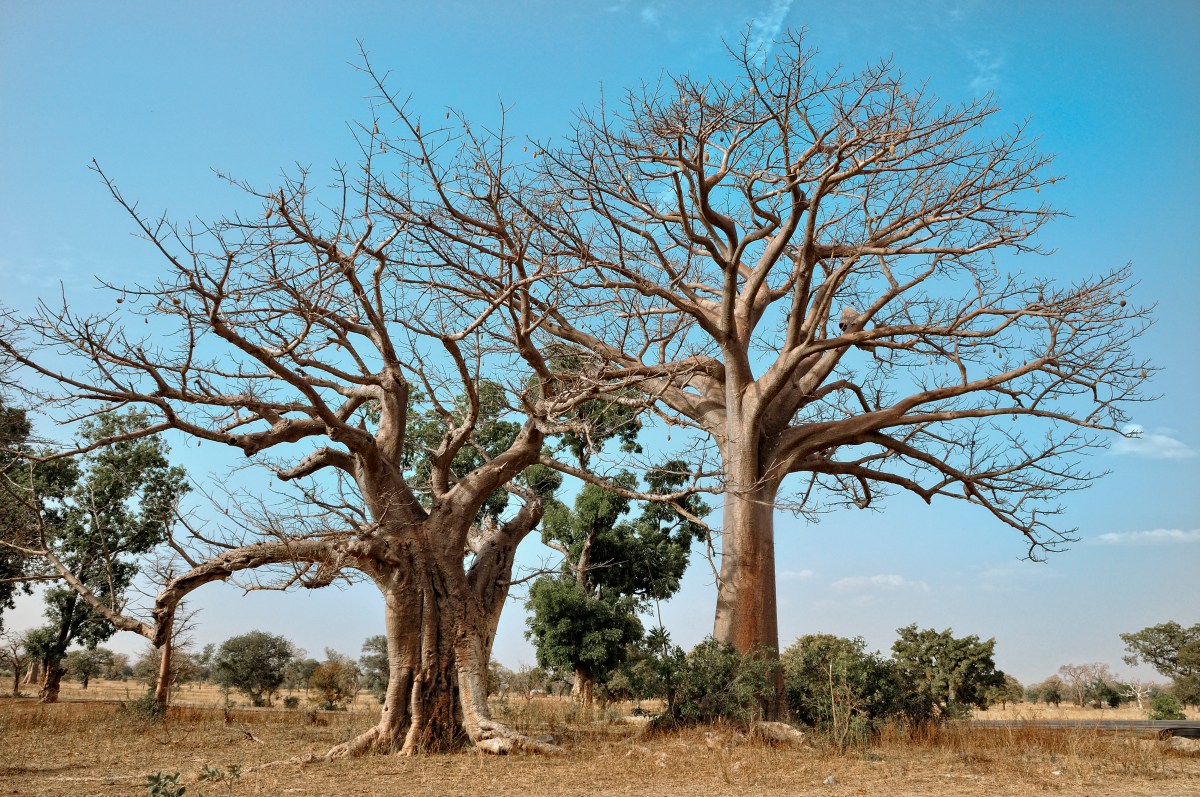African baobab trees, among the oldest and biggest angiosperm trees in the world, are unexpectedly dying off, reports The Los Angeles Times. A team of international scientists found that the spate of deaths might be due to climate change, but they would need to do more research to confirm or deny that theory. With its iconic profile—a tall, burly trunk topped with a tiny fringe of branches—the baobab is a staple of the African savannah. They are known to survive anywhere from 1,000 to 2,000 years and their leaves and fruits provide many species food and nourishment in an often unforgiving landscape. Their wood can be harvested for hunting and fishing tools and when hollowed out, the trunks can be used for shelter.
“The deaths of the majority of the oldest and largest African baobabs over the past 12 years is an event of an unprecedented magnitude,” the scientists wrote, according to The Los Angeles Times. “These deaths were not caused by an epidemic and there has also been a rapid increase in the apparently natural deaths of many other mature baobabs.”
Thanks for reading InsideHook. Sign up for our daily newsletter and be in the know.


















